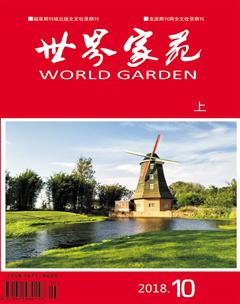Kansei Engineering:A Consumer—oriented Product Research Methods
王文清 沈学会
Abstract:Kansei engineering is a consumer-oriented product development technology.This paper first introduces the concept of Kansei Engineering,the current research status and theoretical system at home and abroad.It also discusses the limitations of Kansei Engineering.This paper is expected to provide an effective reference for the research and application of Kansei Engineering in China.
Keywords:Kansei engineering;Emotional design;Consumer-oriented technology;design method
1.Introduction
With consumer behavior and lifestyle changes,the sales tactics of product-out strategy(Manufacturers rely on their own design strategies regardless of consumer demand and preference production)can not satisfy people's demand for products.At this time,the emotional design,emotional design and psychological design of consumers' inner emotional appeals are paid more and more attention.It also changed from "product-oriented" to "consumer-oriented".
2.Kansei Engineering
The term“Kansei Engineering”was first proposed in the speech“Car Culture”by Kenji Yamamoto of the Mazda Corporation of the United States at the University of Michigan in 1986[1].Mitsuo Nagamachi define kansei engineering as "a technique that transforms the perception or image produced by a consumer into a design element"[2].It is a technology based on ergonomics and consumer-oriented product development[3].
3.Category of kansei engineering.
3.1Category Classification
Through the investigation of consumer image of products in the form of a tree diagram layered,and then divided into 0 layers to N layers,until the details of product detail design can be clearly defined,thus the conversion of consumer image to product design elements is completed.Japan's Mazda is dedicated to developing a sports car designed for young people,miyada.The Mazda design team defined the zero-level concept as "Human Machine Unity,HUM" through consumer research[4].
3.2 Kansei Engineering System
This system can be divided into forward kansei engineering system and backward kansei engineering systems.
The forward kansei engineering is a one-way system that transforms the kansei image of the consumer into the design elements.It can provide the designer with the design direction,but it can not verify whether the designed products conform to the consumer image.
The backward kansei engineering recognizes the designer's input sketches through the computer identification system and the evaluation system,and give the kansei evaluation of the sketches designed by the designers with the help of the kansei database and the extraction of the design elements of color and shape.
3.3 Hybrid kansei engineering
Hybrid kansei engineering systems combines forward and backward systems.The product design elements can be obtained by entering the kansei image of consumers,and the sketches and ideas of designers can be effectively verified through databases[6].The design is repeated so as to make the product conform to the consumer image while improving the effectiveness of kansei design.
3.4 Kansei Engineering Modeling
Using abstract mathematical form,table and flowchart to build relationships between kansei vocabulary and product design elements,and to establish a mathematical prediction model,in order to reveal the logical relationship between consumer image and product design elements.
3.5 Virtual Kansei Engineering
Virtual kansei engineering is an extended type of kansei engineering system,which is a kind of advanced computer technology.It is to use the Virtual Reality(VR)technology to realize the designer's design concept in the multimedia virtual space.Through the experience in the virtual space,designers can give designers feedback on their design products to improve their design repeatedly.
3.6 Collaborative Kansei Engineering
Collaborative kansei engineering is a software program that uses the Internet as a basis to use computers to work together,enabling multiple designers to work together.After determining the product's design goals,designers used computer sound and visual technology to make designers and consumer break through the space barriers,exchange ideas and cooperate in research and development of products[6].
4.Kansei engineering limitations
Although this consumer-oriented design element is being used by more and more designers,kansei engineering still faces many problems in product development:
(1)Designers usually use Category Classification to analyze consumers.However,this method will result in inaccurate results due to personal factors of designers and selected samples.
(2)The discussion of consumer image is mostly from the design point of view,ignoring the research on psychology.
(3)Kansei engineering is often used to evaluate products that already exist.Therefore,kansei engineering is more effective in evaluating products and prototypes after long-term use[4].
5.Summary
In today's fierce market competition,kansei engineering was born to adapt to this kind of market.Therefore,kansei engineering plays an important role in product development and innovation.This article hopes to provide an effective reference for Chinese enterprises and design scholars from the introduction and discussion of kansei engineering,which is also the purpose of this study.
參考文献
[1]Yamamoto K.Kansei Engineering the Art of Automotive Development at Mazada[A].The University of Michigan,1986.
[2]Nagamachi,M.Lokman,A M.Innovations of Kansei Engineering[M].CRC Press,USA,2011.
[3]苏建宁,刘志君.基于感性工学的传统器物形态创新设计方法研究[J].创意与设计,2016
[4]Mitsuo Nagamachi,Simon Schütte.Affective Meaning:The Kansei Engineering Approach.《Product Experience》,2008.
[5]赵秋芳.感性工学及其在产品设计中的应用研究[D].济南:山东大学,2008.
[6]王松琴,何灿群.感性工学:以用户为导向的工效学技术[J].人类工效学,2007.
作者简介
1.王文清,齐鲁工业大学硕士生,研究方向为人机工程与产品设计。
2.沈学会,齐鲁工业大学教授,研究方向为复合加工技术。
(作者单位:齐鲁工业大学(山东省科学院))

